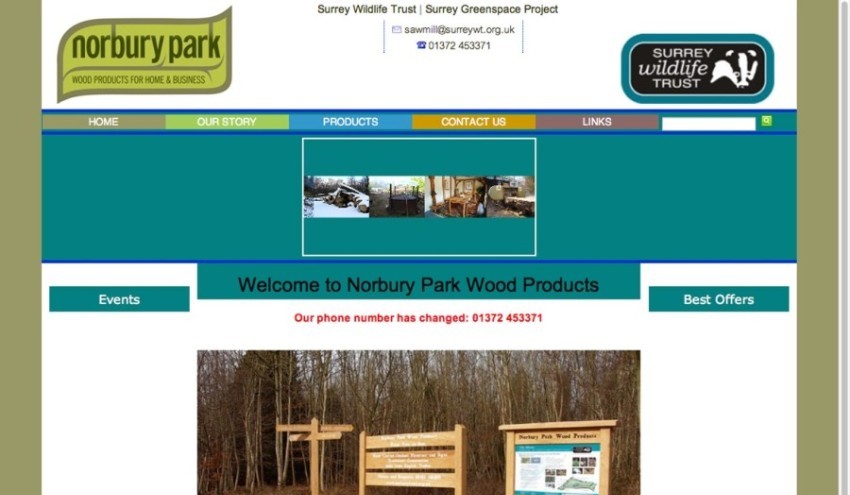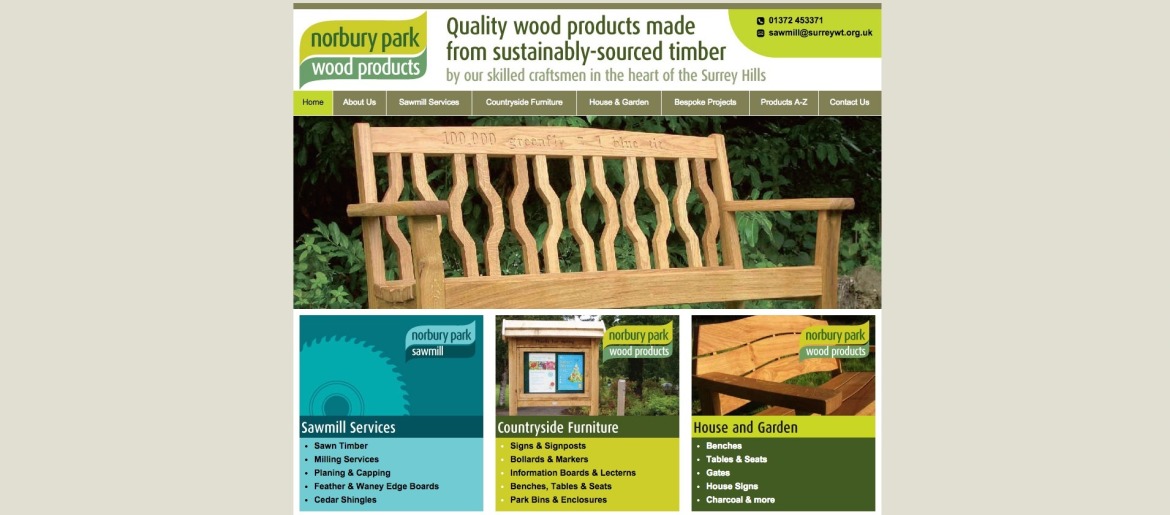The Internet opens up a huge number of possibilities for businesses but it can also be a hinderance.
This is why it is so important to have a website that is regularly updated and well designed and Norbury Park Wood Products is one business who were concerned that theirs wasn’t.
Owned by Surrey Wildlife Trust, Norbury Park provide a variety of wooden products to local government and heritage customers like Surrey County Council and National Trust. They also create bespoke garden furniture for businesses and individuals.
Recently, they have faced the challenge of increased competition and reduced demand from local government and heritage, putting pressure on them.
“The Sawmill had struggled to return a profit and Surrey Wildlife Trust actually closed it for a short period before bringing in a new management team,” said FdK’s Simon de Kretser.
“This included a volunteer business consultant charged with putting the business on a better financial footing and one of their first priorities was to address the perceived problems with the existing Norbury Park website.”
While the previous website (pictured below) referenced all of the products and services offered, the navigation and product presentation was confusing and some of the content was incomplete and out of date, partly due to the outdated and complicated Content Management System.

All of this meant that the website did not reflect the design and production quality of Norbury Park’s products and would more likely turn customers away than encourage them to enquire.
By using design thinking, you can build a website that is aligned with the quality of your product or service and according to Norbury Park’s Paul Nash, theirs (featured at the top of this article) is now “a great shop window which has increased enquiries by 20%.”
“The design of a website should be approached in much the same way as any piece of communication, with the additional complication that it can often allow for a two-way relationship with the visitor in a way that a brochure cannot.” said Simon de Kretser.
We always follow our four-stage design process of ‘Listen, Understand, Create and Implement’ when approaching a client’s website design. It is imperative to discuss the precise nature of their product or service, the marketplace they operate in and the profile of their existing and prospect clients, staff, suppliers and stakeholders so that we can fully understand the nature and needs of all those who will be visiting the website. Only then can we start the design and implementation process and truly answer the brief.
“The design should not only encompass the content and layout of the site, but also the technical needs of the target audiences, ensuring that the user experience of the site is satisfying regardless of the device they are browsing on.”
For any business owners, here are 5 design questions to ask of your website:
– Does my website cater for the specific types of people that will be visiting?
– Are the actions I want them to take clear? (contact, purchase, interact?)
– Is my website fully integrated into my marketing strategy and does it reflect my brand values?
– Does my website adapt effectively to different device platforms (smartphones, tablets and computers)
– Can I easily add new content and/or edit existing content myself?
